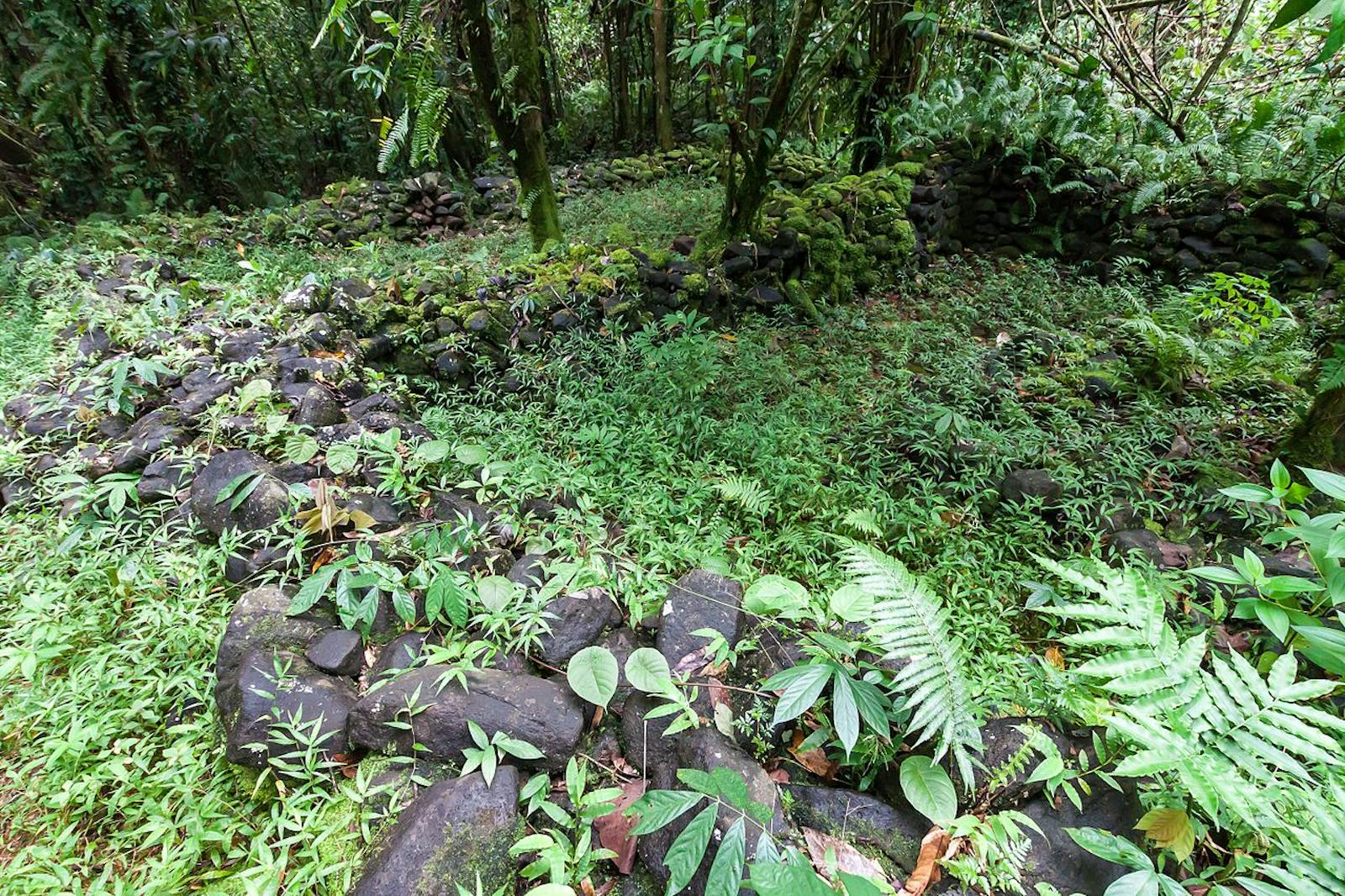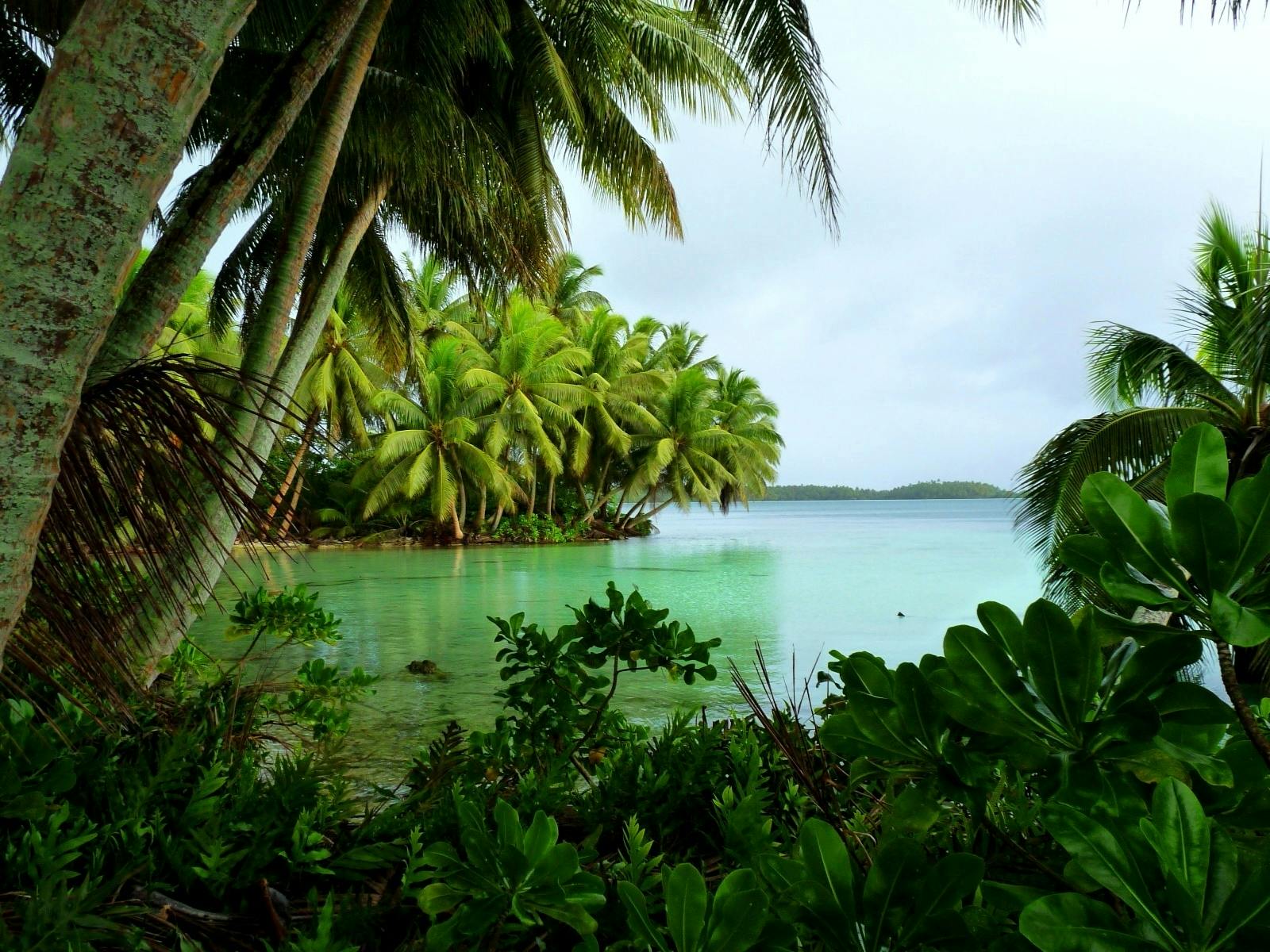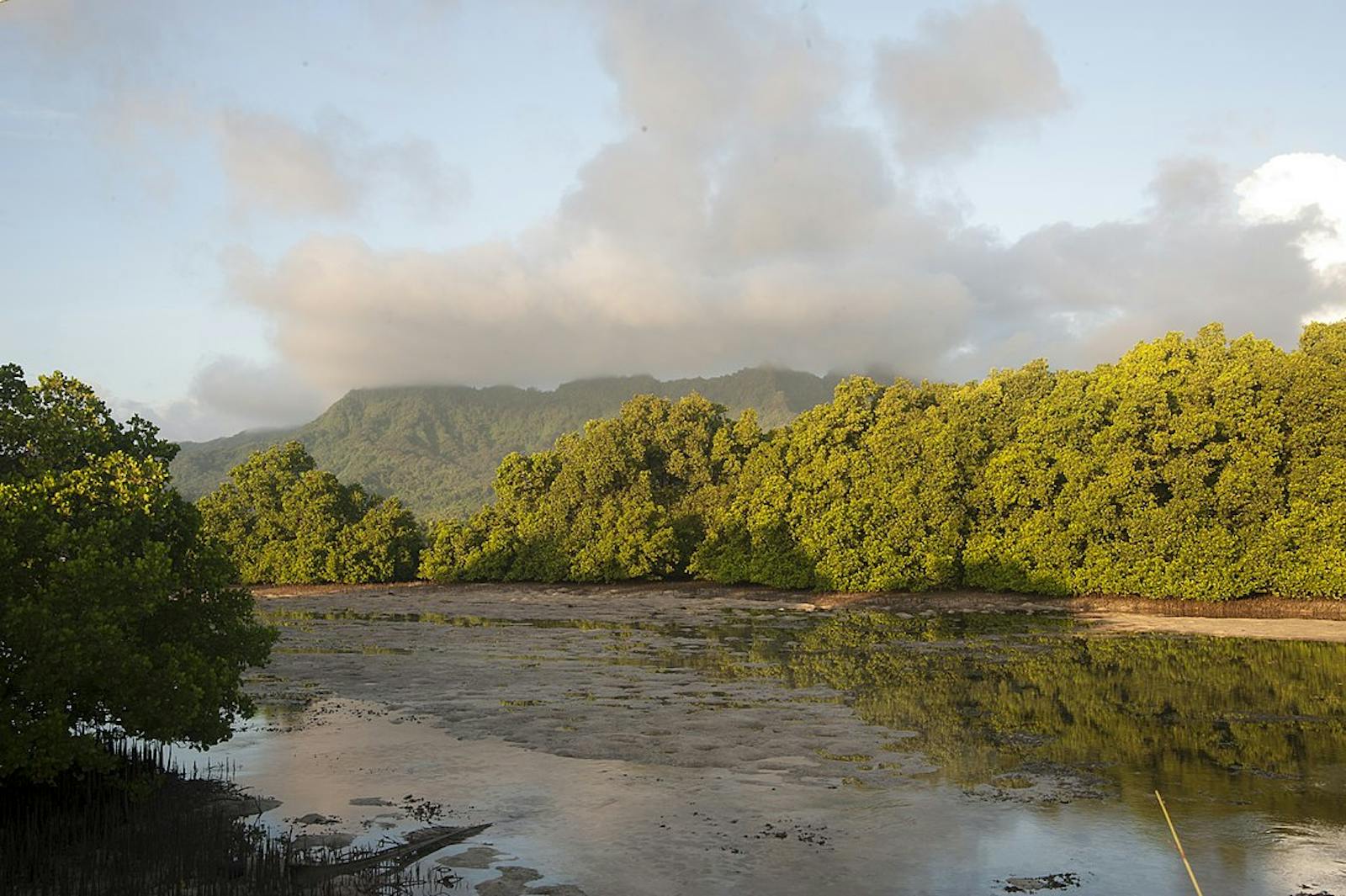Carolines Tropical Moist Forests
The ecoregion’s land area is provided in units of 1,000 hectares. The conservation target is the Global Safety Net (GSN1) area for the given ecoregion. The protection level indicates the percentage of the GSN goal that is currently protected on a scale of 0-10. N/A means data is not available at this time.
Bioregion: Palau & Caroline Tropical Islands (OC8)
Realm: Oceania
Ecoregion Size (1000 ha):
58
Ecoregion ID:
618
Conservation Target:
81%
Protection Level:
0
States: Federated States of Micronesia
The Caroline Islands are the tops of ancient volcanoes isolated from one another by vast distances of the Pacific Ocean. The oldest are classic atolls that no longer have emergent volcanic islands. Chuuk, Kosrae, and Pohnpei are younger with larger, eroded volcanic peaks ringed by coral reefs. Verdant cloud forests cap the highest peaks of the larger islands acting as refuge for many plants and animals unique to these very restricted habitats.
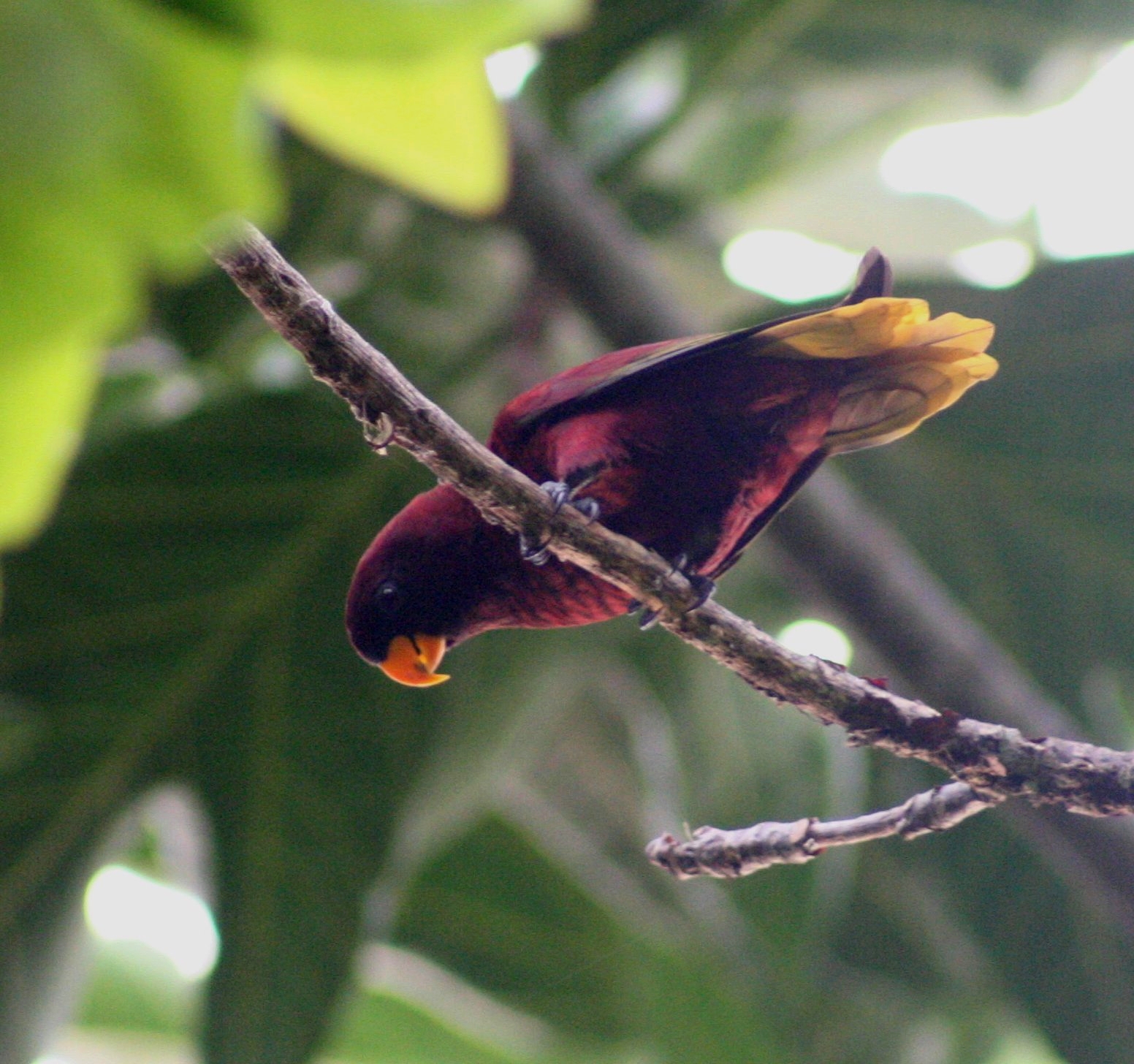
The flagship species of the Carolines Tropical Moist Forests ecoregion is the Pohnpei lorikeet. Image credit: Creative Commons
The Caroline Island group includes the Remetau Group, Chuuk, Pohnpei, and Kosrae. The atoll islands in the eastern Carolines support atoll vegetation that is widespread across the Pacific, though the communities are comparatively rich, likely due to abundant rainfall. The eroded volcanic peak islands of Chuuk, Pohnpei, and Kosrae once were ringed with moist lowland forests, though after millennia of settlement and agriculture, only remnant swamp forests can still be found in Kosrae and Pohnpei. Rotating crops, sakau (kava) plantations, and thick tangles of Hibiscus tilaceus occur on the lower slopes.
Above the cultivation zone the lower montane forest is characterized by the endemic palm Maesa carolinensis, the tree fern Cyathea nigricans, and Clinostigma ponapensis. Upslope one finds Cyathea ponapeana and Pandanus patina as common elements. Ptychosperma and Metroxylon palms occur, as well as broadleaf trees including Glochidion spp., Myrsine, Elaeocarpus, Syzgium, Psychotria, Timonius, Gynotroches, and Astronidium. Ferns are abundant as are vines and lianas, such as Ipomoea, Merremia, Freycinetia, Hypserpa, and Pachygone.
Different islands support distinct assemblages. Kosrae cloud forests support Horsfieldia, Neubergia, Psychotria, Syzgium, Campnosperma, Macaranga, Cyathea, Dendrocnide, Boehmeria, and Ficus, and Ptychosperma ledermanniana. Above 300 to 450 m on the islands, one encounters dwarf cloud forest, spongy, mossy, and everwet. Here there are many epiphytes, including Elaphoglossum carolinense, Pteris spinescens, Mecodium polyanthos, Lindsaea rigida, and Peperomia kusaiensis.

Brown noddy. Image credit: JJ Harrison, Creative Commons
Canopy trees include Cyathea ponapeana, Polyscias subcapitata, Elaeocarpus carolinensis, and Astronidium kusaianum. Pohnpei and Kosrae have the only remaining patches of montane cloud forest in Micronesia. These diminutive cloud forests are among the lowest and smallest in the world, but harbor a remarkable percentage of unique species. Pohnpei, in particular, has diverse microclimates, terrain, and soils and its peak is the highest geographic point (650 m) for more than 3,220 km in any direction creating a globally unique environment.
The Carolines have over 200 unique terrestrial species. Twenty-four species of reptiles (skinks and geckos) and amphibians occur, with four endemic (and one endemic genus). Four fruit bats—Pteropus marianas, P. molosinnus, P. insularis, and P. phaeocephalus—occur, with P. phaeocephalus being endemic. Thirteen bird species are endemic to the ecoregion, including several single island endemics, such as the striking white and black-faced Truk monarch, Pohnpei fantail, Pohnpei mountain starling, and pomegrante-plummaged Pohnpei lory.
Among the 29 recorded bird species on Pohnpei, 24 make extensive use of the upland forest habitat. Pohnepei’s cloud forest also has 26 species of land snails. The distributions of some rare species are incredibly small. For example, three endemic forest plant species (Schefflera kraemeri, Randia carolinensis, and Semecarpus kraemeri) are found only in small montane forest remnants on Uinipot Peak on Tol Island in Chuuk.
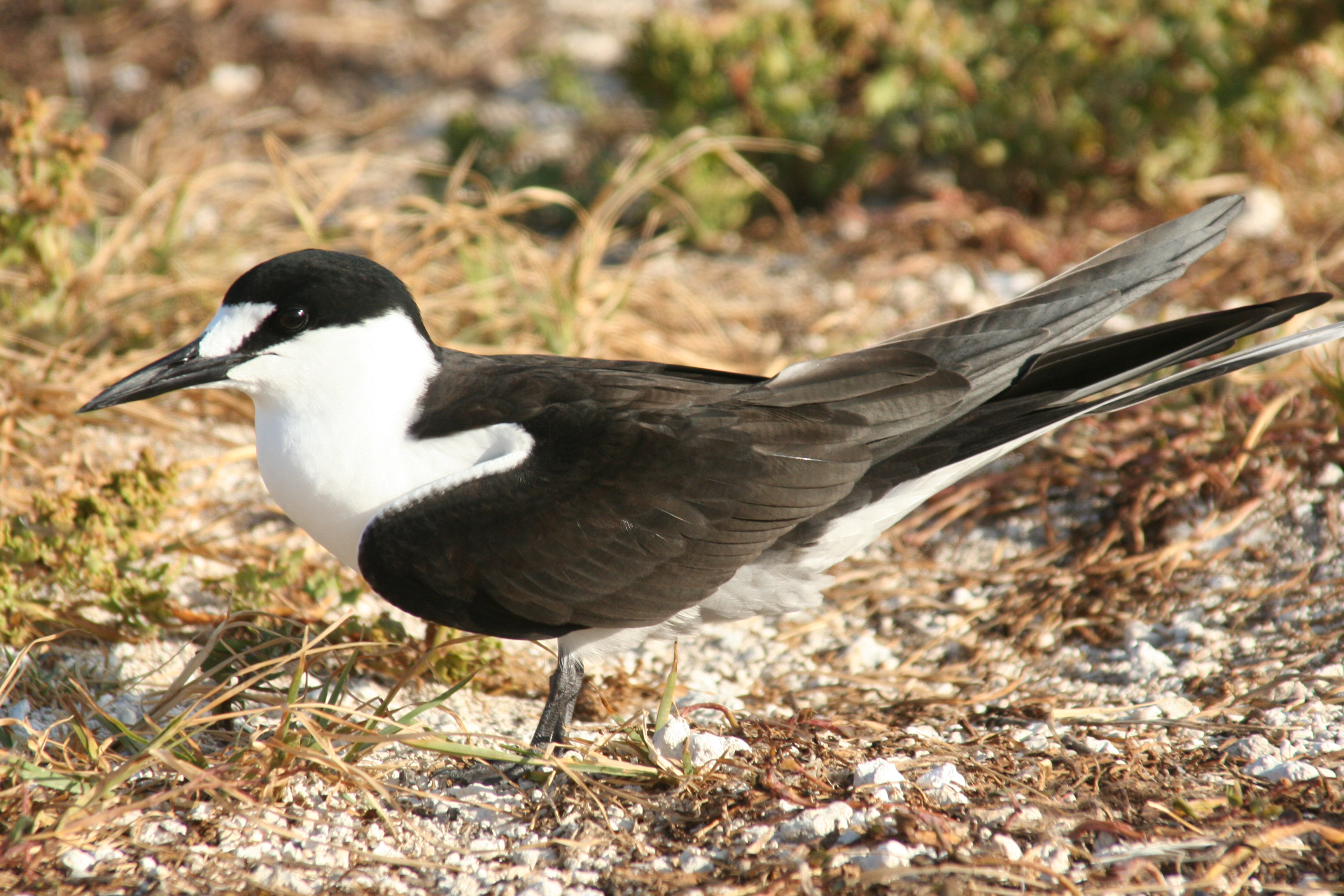
Sooty tern. Image credit: Duncan Wright, Creative Commons
Atoll and lowland moist forest vegetation has long been modified by human settlement and agriculture. For more than 2,500 years there has been cultivation of coconut, breadfruit, taro, bananas, and sugarcane. Pohnpei has the most natural upland and cloud forest remaining, though two-thirds of the native forest have been lost in the past few decades. Semi-natural montane forest in Chuuk still occurs in small patches on the steeper slopes and on the summit of Uinipot Peak on Tol.
Expansion of commercial sakau (kava) cultivation on all three larger islands is eating away at the lower elevation natural and semi-natural forests. Invasive rats eat birds and bird eggs, as well as native invertebrates and the seeds of native plants. The extinction of the Kosrae crake and Kosrae starling is blamed on rat predation. Hunting of fruit bats and the Micronesian pigeon and Caroline Islands ground dove continues to threaten diminish vulnerable populations.
Five upland forests on the larger islands have been placed under protection for biodiversity and watershed management, roughly covering 58.8 km2 (about 10% of total land area). The Yela Environment Landowners Authority (YELA), a grouping of 13 families, chose to set aside their ancestral lands―one of the few remaining roadless areas in the FSM―for the purpose of conserving one of the last Terminalia carolinensis forests in the world, a fresh water swamp recognized as one of the 24 Priority Areas of Biodiversity Significance (ABS) by the FMI National Biodiversity Strategy and Action Plan.
Priority conservation actions for the next decade are to: 1) strengthen community-based protection of the remnant cloud forests on Uinipot Peak on Tol Island in Chuuk; 2) strengthen efforts to keep the invasive brown tree snake and little red fire ant from arriving on the islands; and 3) effectively limit the expansion of sakau commercial cultivation upslope into natural forests of the larger islands.
Citations
[CEPF] Critical Ecosystem Partnership Fund. 2007. Ecosystem Profile – Polynesia-Micronesia Biodiversity Hotspot. [CEPF] Critical Ecosystem Partnership Fund, Washington, DC.
Federated States of Micronesia. 2010. Federated States of Micronesia Fourth National Report: Implementation of Article 6 of the Convention of Biological Diversity. Pohnpei, FSM. 202 pp.
The Nature Conservancy. 2003. A Blueprint for Conserving the Biodiversity of the Federated States of Micronesia. Pohnpei, FSM.
